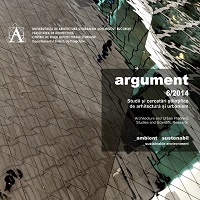DE LA LOCUL FIZIC LA LOCUL TEOLOGIC. DESPRE OPTIMA CONFORMARE A SPAȚIULUI DE CULT CREȘTIN
FROM THE PHYSICAL PLACE TO THE THEOLOGICAL PLACE. ABOUT THE OPTIMUM CONFORMATION OF THE CHRISTIAN WORSHIP SPACE
Author(s): Liana IliuSubject(s): Christian Theology and Religion, Architecture
Published by: Editura Universitară “Ion Mincu”
Keywords: anamnesis; Axis Mundi; centre; circle; cross; knowledge; primordial tradition; sign; spiral; square; sustainable space; symbol;
Summary/Abstract: This paper follows a recurrent personal question during the latter years: is still necessary to maintain the traditional parti of the Christian worship spaces? I mean, is it necessary to include the sign of the cross in the plan or the space of the Christian temple? Why basilica-type space, Palaeo-Christian, became, in time, a space in Greek or Latin cross? It is this symbolism the result of knowledge, or formalism? And is it natural its consecration as the archetypal space of Christian worship? So, it becomes a sustainable space, users having a maximum benefit? Analyzing modernist or later architectural achievements, innovative, of high spatial quality, expressive and recognized as part of the classical part of the field area, the question arises: where is the truth? Traditional forms had no justification and may be abandoned, for novel spatial experiences? May they become models for Christian worship space, given their success? Or are they just gathering spaces? Or concert halls? Evolving, as was natural, the symbols associated with these spaces became increasingly evident: the unidirectional basilical space leaves room for the two-dimensional one, spatial and symbolic perfection being achieved by including the upward direction: Axis Mundi. And why is Axis Mundi expressed at the intersection point of the nave with the transept? Why not exactly on the altar table? What prevails? The altar or the cross shape? Such a space is a place of remembrance (anamnesis), a communion space. The conclusion that emerges is that the complex knowledge base preserved through what we call primordial tradition is not a burden, but a way to regain deep, lost meanings.
Journal: Argument
- Issue Year: 2014
- Issue No: 6
- Page Range: 81-103
- Page Count: 23
- Language: English, Romanian

